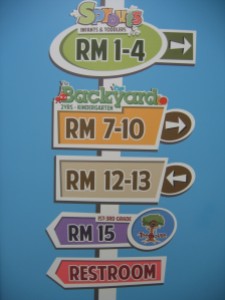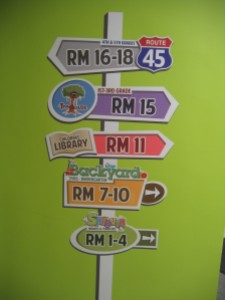This post is Part 2 of Ministry Basics: Selecting Curriculum.
You can read Part 1 here.
As our ministry fine-tuned our vision, mission and core values this past summer, it was necessary that our curriculum reflected what we believed and what we wanted children to walk away with.
When thinking about Sprouts (our Infant and Toddler area) and The Backyard (our Early Childhood area), we realized that this is where seeds of faith are planted and nurtured. These environments are where many children will get their first impression of church and Jesus, so the foundation we lay here is crucial.
What we use
I have been a big fan of Orange’s First Look curriculum for quite some time now. I think it is the most creative, outside-of-the-box material for preschoolers. When it came down to evaluating our needs, I knew First Look was the way to go.

The selection process & why this was our choice
For years, our Infant and Toddler area used one curriculum for both service hours and our Early Childhood area used 2 different curricula (one for each service hour). I felt that two of the three curricula was outdated and needed to be replaced immediately. The remaining one was one that I liked and have used before, but I felt that when we thought about what we wanted young children to know, it lacked a unified focus. We wanted (and needed) a unified focus.
When children leave our Early Childhood ministry, I want them to walk away knowing certain basic truths that they could carry with them into the elementary years. First Look’s curriculum is build around three basic truths:
- God made me.
- God loves me.
- Jesus wants to be my friend forever.
There were a few other things that we knew we wanted:
- We wanted the foundation to be easily understood and more intentional.
- We also wanted a digital curriculum, as curriculum costs had been almost half of our annual budget.
- We knew that we wanted to streamline our curriculum so that parents were more likely to reinforce what was taught in class if there were not as many responses to “What did you learn at church today?”
How First Look looks at our church
Switching over to a new curriculum, let alone a digital one, was not readily received by our veteran volunteers. But I asked them to trust me to walk through it with them and give it time; they agreed. Because of this, we wanted to make the transition from printed material to digital material as easy as possible. This meant:
- Showing our volunteers how to access the materials online through Orange’s website;
- Providing paper copies, especially to our more “seasoned” volunteers;
- Providing the paper copies a month in advance;
- Photocopying the activity pages for our volunteers (they email our Administrative Coordinator by Thursday at noon with what they need copied and the quantities);
- Emailing a digital copy – just in case.
In implementing First Look, we have opted to use the curriculum in a classroom format vs large group/small group as it’s written. In short, what this means is that each classroom is responsible for its own music and Bible story time. (We have occasionally brought our 4-and 5-year-olds together for the Bible story on video.)
What we like
As mentioned above, I like the simple nature of the three basic truths. Each week’s lessons reinforces one of the basic truths. We also like that each lesson includes different activities for different learning styles: there’s music and movement (the songs and motions are lots of fun!), games, crafts, and repetition (the Bible verse and the song stay the same for the entire month). (The games and crafts usually include items that we already have on hand). Each lesson is very engaging and doesn’t look the same each week.
We also like that lessons are available well in advance on the website. This is an added bonus for those who like to look ahead and see what’s coming up. In addition, there is an option to purchase the Bible story videos.
What we don’t like
The biggest area of concern for us so far has been altering the material for our 2’s. Some of our volunteers feel that the lessons are way over the heads of 2-yr olds. I have personally contacted friends who use the curriculum, First Look’s Facebook page, and our Orange Consultant to get guidance into this issue. I learned that we are not the only ones who’ve struggled with this age group.
We have tried to simply the lessons but I’m not sure that it’s enough. We will re-evaluate after Christmas to see if we need to switch gears for our 2’s while keeping in line with our core components.
So, there you have it. I’d be happy to talk with you if you’re interested in learning more or have any questions. You can email me here. You can also learn more by visiting First Look’s website (you can click the logo above).
Tomorrow, I’ll share what we selected for our Elementary Ministry and on Friday, I’ll share what we selected for our Preteen Ministry. I hope you’ll come back and read all about that!
Do you use First Look for your preschool ministry? What has your experience been?
If you don’t use First Look, what do you use? How’s it working for you?
Like this:
Like Loading...












